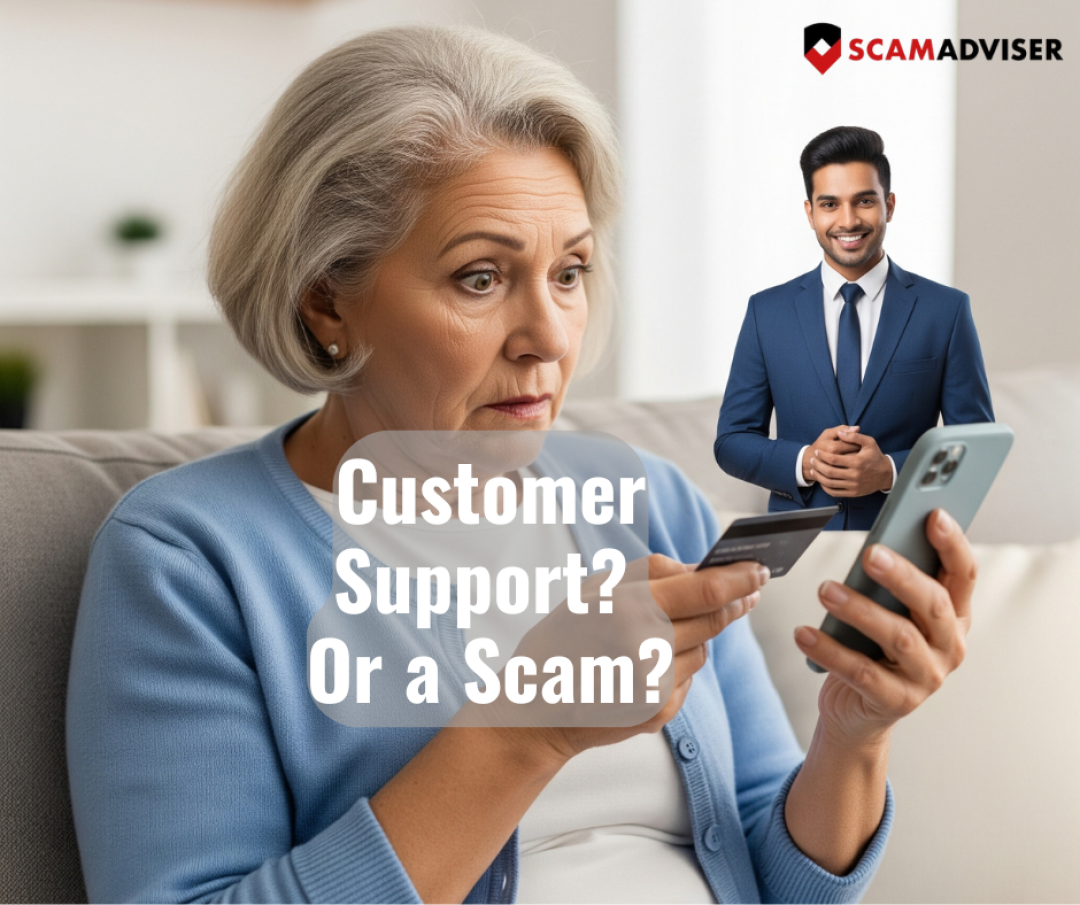Is That Really Tech Support? How to Outsmart the Rise in Customer Support Scams

Author: Adam Collins
Imagine this: You're working on your computer when suddenly—bam!—a pop-up screams, “Virus detected! Call support now!” Or your phone rings, and someone calmly says they’re from Microsoft, Apple, or your bank, warning of suspicious activity on your account. It feels real. It sounds real. But what if it’s not?
Welcome to the growing world of customer support scams—sneaky, convincing, and increasingly dangerous. These scams aren’t just annoying pop-ups anymore. They’re sophisticated traps that steal your money, your information, and your peace of mind.
In this guide, we’ll break down how these scams work, how to spot the red flags, and—most importantly—how to protect yourself. And while tech giants like Google are stepping up with tools like Gemini Nano to block scams and keep devices safe, the truth is: you are still the first line of defense.
Let’s help you stay one step ahead.
What Are Customer Support Scams?
Customer support scams are online traps where scammers pretend to be from trusted companies—think Microsoft, Amazon, or your bank—to trick you into handing over personal info, money, or even control of your device.
Here’s how they typically operate:
- Unsolicited contact: You get a random call, email, text, or scary browser pop-up claiming your device or account has a problem.
- Fear tactics: They say things like “your computer has a virus,” “your account’s been hacked,” or “you’re about to be locked out.”
- Spoofed identities: They use real company logos, emails that look legit, or even fake caller IDs to seem trustworthy.
- Remote access requests: They ask you to download software (like TeamViewer or AnyDesk) so they can “help”—but really, they’re taking control.
- Weird payment methods: Ever been asked to pay in gift cards or crypto? Major red flag.
The worst part? Scammers are now impersonating everyone from tech companies to utility providers. In fact, we have highlighted an increase in toll road scams, especially in the US. If they sound helpful but are rushing you, stop and think: Is this really who they say they are?
Spot the Scam: Red Flags to Watch For
1. They contacted you first.
If you didn’t reach out, be suspicious. Real tech support doesn’t cold call or send random pop-ups asking you to call them.
2. There’s panic in their voice.
Scammers love urgency. “Act now or lose access!” is their favorite line. Real support doesn’t pressure you like that.
3. They want access to your device.
Never allow remote access unless you initiated the request and can verify the rep.
4. They ask for gift cards or crypto.
No legitimate company asks for iTunes gift cards to fix a printer issue. If it feels fishy, it is.
5. Their message is a mess.
Misspellings, strange formatting, or robotic language are dead giveaways.
6. They say you’re owed a refund.
If they claim they owe you money and then ask for your bank info or remote access, run.
What Happens If You Fall for It?
Customer support scams aren’t just a quick annoyance; they can leave a real mess behind:
- You could lose money, sometimes thousands of dollars.
- Your identity could be stolen, leading to fraud on your accounts.
- Your device may be infected with malware or ransomware.
- You’ll lose time fixing it all: resetting passwords, scanning for viruses, and calling banks.
- And worst of all? You might stop trusting tech altogether.
It’s not just a scam—it’s an attack on your trust.
How to Stay Safe and Scam-Proof

Here’s how to fight back:
- Don’t trust—verify: Got a suspicious message or call? Look up the company’s official contact info yourself. Never use the number they give you.
- Never grant access unless you asked for help: Random support offers = red flag.
- Use strong passwords & 2FA: It’s basic but powerful.
- Update your software: Always run the latest version of your OS, browser, and antivirus. Google Chrome now uses AI (like Gemini Nano) to detect malicious pop-ups and scams before they reach you.
- Install trusted security tools: And run regular scans.
- Educate others: Older adults and non-tech-savvy users are frequent targets. Share what you know.
- And remember: If it sounds too good, too urgent, or too weird, it’s probably a scam.
If You’ve Been Scammed: What to Do Next
Take a deep breath. Here’s what to do immediately:
- Disconnect from the internet if you gave remote access.
- Change your passwords, especially for email and banking.
- Run a full security scan on your device.
- Contact your bank to report any fraudulent charges.
- Report the scam to:
-
- Your local authorities or consumer protection agency, like the FTC
- The company being impersonated
- Your internet provider
- Consider a factory reset if your device was deeply compromised.
You’re not alone—and you can recover.
Bottom Line: Awareness Is Your Best Antivirus
The bad news? Customer support scams are growing—and getting sneakier.
The good news? Now you know how to beat them.
Stay sharp, stay calm, and don’t fall for the fear. You’ve got this.
And next time your screen flashes a fake warning or a “support agent” calls out of nowhere, you’ll know exactly what to do: hang up, shut down, and protect what matters.
Because in today’s digital world, awareness is your best antivirus.
Report a Scam!

Have you fallen for a hoax, bought a fake product? Report the site and warn others!
Scam Categories
Help & Info
Popular Stories
As the influence of the internet rises, so does the prevalence of online scams. There are fraudsters making all kinds of claims to trap victims online - from fake investment opportunities to online stores - and the internet allows them to operate from any part of the world with anonymity. The ability to spot online scams is an important skill to have as the virtual world is increasingly becoming a part of every facet of our lives. The below tips will help you identify the signs which can indicate that a website could be a scam. Common Sense: Too Good To Be True When looking for goods online, a great deal can be very enticing. A Gucci bag or a new iPhone for half the price? Who wouldn’t want to grab such a deal? Scammers know this too and try to take advantage of the fact. If an online deal looks too good to be true, think twice and double-check things. The easiest way to do this is to simply check out the same product at competing websites (that you trust). If the difference in prices is huge, it might be better to double-check the rest of the website. Check Out the Social Media Links Social media is a core part of ecommerce businesses these days and consumers often expect online shops to have a social media presence. Scammers know this and often insert logos of social media sites on their websites. Scratching beneath the surface often reveals this fu
So the worst has come to pass - you realise you parted with your money too fast, and the site you used was a scam - what now? Well first of all, don’t despair!! If you think you have been scammed, the first port of call when having an issue is to simply ask for a refund. This is the first and easiest step to determine whether you are dealing with a genuine company or scammers. Sadly, getting your money back from a scammer is not as simple as just asking. If you are indeed dealing with scammers, the procedure (and chance) of getting your money back varies depending on the payment method you used. PayPal Debit card/Credit card Bank transfer Wire transfer Google Pay Bitcoin PayPal If you used PayPal, you have a strong chance of getting your money back if you were scammed. On their website, you can file a dispute within 180 calendar days of your purchase. Conditions to file a dispute: The simplest situation is that you ordered from an online store and it has not arrived. In this case this is what PayPal states: "If your order never shows up and the seller can't provide proof of shipment or delivery, you'll get a full refund. It's that simple." The scammer has sent you a completely different item. For example, you ordered a PlayStation 4, but instead received only a Playstation controller. The condition of the item was misrepresented on the product page. This could be the